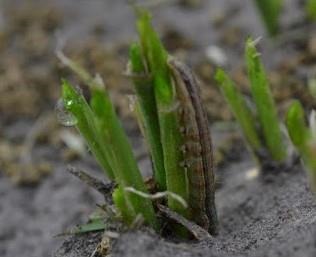By Bruce Potter
Scout any corn planted into a rye cover crop for armyworm now! The first true armyworm infestation in corn has been reported in south central Minnesota. These larvae survived the heat wave.

Winter rye is a magnet for armyworm, but dense, lodged grasses, including cereals, may also be attacked. Mowing roadside or ditch hay may actually drive larvae into susceptible grass crops.
There have also been scattered reports of poor performance of pyrethroid insecticides on large armyworm so check control after treatment. Remember that chlorpyrifos is no longer labeled for use. A diamide insecticide or diamide mix are options for control.
Source : umn.edu